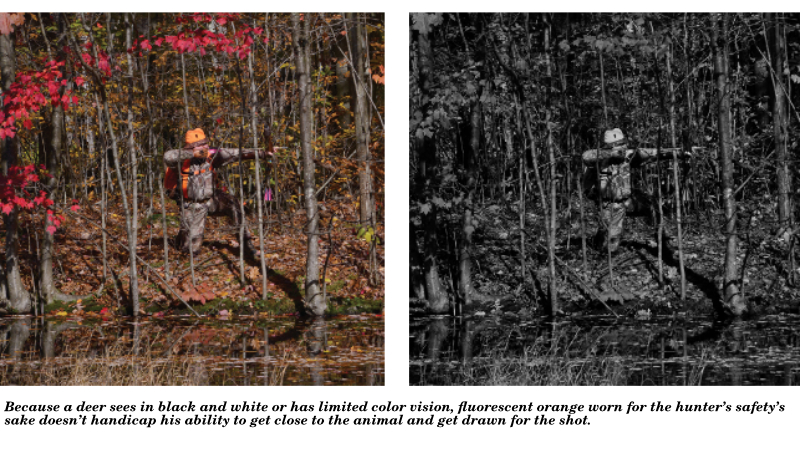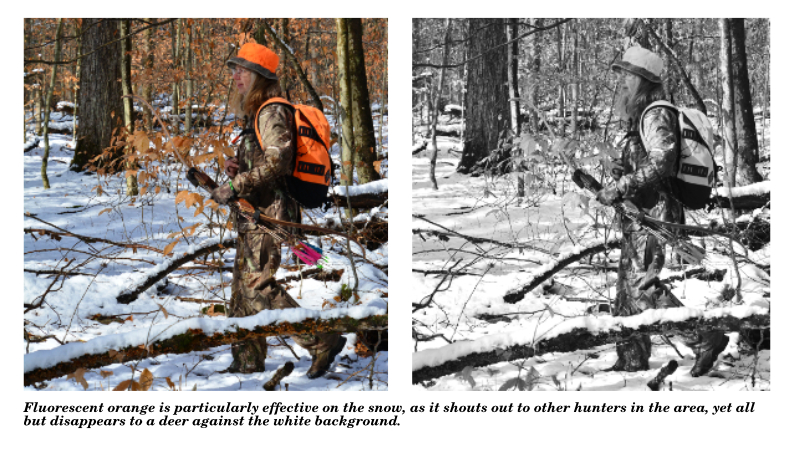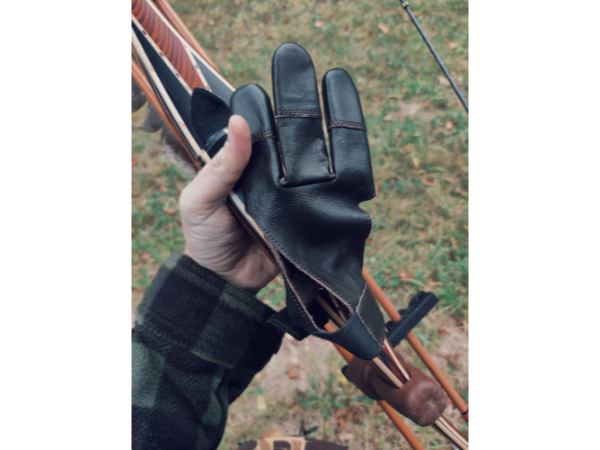My wife, Linda, sat in her climbing tree stand on the edge of a pine thicket less than 10 yards from a forest service dirt road. The buck scrape to her left was hot with activity. I was across the road in a ground blind, guarding the last few fallen wild apples of the year.
A pickup truck moved slowly toward us, road hunting. We were each watching the vehicle from our hiding locations. We both were in full camo, including face masks. The pickup stopped in the middle of the road and the driver jumped out, shotgun in hand. He took a few steps toward the ditch on my wife’s side of the road and flushed a grouse, which headed for the pine thicket. My wife turned away as the barrel of the gun crossed her position and fired, raining BBs all around her. She hollered as the shooter ducked back into the car.
In a flash (I was much younger then), I was out to the road, barking at him and snapping at his tires as he drove away in a cloud of dust. I’m glad he didn’t stop. Nothing good would have happened. But, while road hunting is illegal, he honestly had no way of seeing Linda when he shot. Her wearing a few inches of fluorescent orange would have made all the difference.
Fluorescent orange saves lives. It has nearly eliminated mistaken for game, line of fire, and dim light type hunting accidents. In my home state of Pennsylvania, these accidents, along with faulty gun handling, accounted for an average of 44 deaths a year from 1931-1940. Since 1988, the fatality rate has not exceeded single digits. Fluorescent orange was readily available and the hunting color of choice by then. The number of hunters had doubled to over one million.

Traditional archers, and most other archers, go all out for total camouflage. In so doing they may be putting their lives in jeopardy. They are seldom, if ever, the shooter. They could easily be the person shot. The following tales are real. Not all of them involve a traditional bow. Some involve compounds and crossbows; others involve firearms. The person shot could have easily been a traditional bowhunter. You or me. As a conservation officer, lifelong bowhunter, and for 10 years a Hunter Education instructor, these are accidents and near misses that have stuck with me. They should be shared and not forgotten. Read on. It could save your life…or mine.
Fluorescent orange has saved thousands of lives since it made its debut into the hunting fraternity in the late 1960s. Many states and Canadian provinces require it to be worn for most or some of their available hunting. The size, shape, and placement of how much you must wear differs from state to state and season to season. Here in Pennsylvania, the regulations are always changing. But you won’t catch me without at least some fluorescent orange showing in all directions, whether the law requires it or not.
The traditional archer sat 15 feet up in his stand on the side of an oak, watching for the buck he had scouted to come to the abundant acorns. The oak grove was alive with squirrels. He shifted the selfbow slightly in his gloved hand and the bow suddenly exploded. Inches above his hand, a .22 bullet shattered the handle. He shouted, not yet seeing the camouflaged squirrel hunter. The hunter approached and soon they were talking. The rifleman, an older man with glasses, nearly in tears, apologized for “not seeing” the archer. He later paid for a new bow. Fluorescent orange worn or posted by either the archer or the squirrel hunter could have averted this near tragedy.
Thirty years or so ago, archery season was a period set aside in the woods for bowhunters only. As archers demanded longer seasons, so did every other type of hunter. Overlapping seasons became common. Mixing the woods full of rifles, shotguns, muzzleloaders and every sort of bow and arrow launcher has made fluorescent orange a necessity.
In another state recently, an archer who headed into the woods in the morning was killed by another hunter with a muzzleloader. Bugling bull elk had both their attention. A tragic accident that most likely could have been avoided if one or the other had been wearing something florescent orange.
Public lands make for a strange array of users in most seasons of the year. In the East, autumn days attract hikers, mountain bikers, horseback riders, and such along with various types of hunters. Fall is a riot of colors and users. No user should try to be inconspicuous. All should strive to be seen.

On a bear hunt in New Brunswick, I was high aloft in an archery stand, having placed a fluorescent orange band at the base of the tree, as well as wearing an orange vest and hat. Woodcock hunters approached from upslope, spotted me, and veered away. I didn’t have to wave or shout. A few days later, dressed the same, with no dog bells tinkling nearby, my arrow pierced the lungs of a 200-pound bruin from that stand.
In the dim light of an opening morning of Pennsylvania firearm bear season, an adult man with plentiful black hair and beard, wearing an old-style black-and-red plaid hunting suit, was shot dead when he moved under a hemlock tree. A group of rifle hunters were walking by to start a drive. Fluorescent orange was not worn by the victim. I was the first officer on the scene; it wasn’t a nice one. In the absence of orange, the victim should have announced his presence loud and clear. His voice would no more scare nearby bears than the troop of passing drivers. Mistaken for game accidents just don’t happen to persons wearing fluorescent orange.
Camo fabric ground blinds should all be required to have a two-inch band of fluorescent orange encircling them. A gun hunter I know told me about shooting twice at a moving buck and missing. Nothing unusual in that, except the shots were fired when the buck was on either side of a well-camouflaged ground blind the hunter hadn’t seen. Fluorescent orange was worn by the shooter. The guys in the blind should have made the shooter aware of their presence by calling out or should have posted fluorescent orange.
Private land and “No Trespass” posters do not protect you. Persons meander unknowingly onto posted property and some violate the signs willfully. Either way, you won’t end up undetected downrange if you have fluorescent orange displayed.
Fluorescent orange can also assist friends or family members in locating you after you have called for help to drag your trophy. Or the EMTs who have been summoned to pick up your pieces where you landed on a short flight from your tree stand. Long-term, recurring medical problems or being lost can also leave you sitting or lying in the woods, hoping the folks you called can find you. Fluorescent orange can’t prevent stupid but can help with a rescue when stupid gets the best of you. If your problem is fatal, it will make body recovery easier for your family.
In overlapping seasons, I wear and/or post a lot of bright fluorescent orange. I believe the hue appears as white to deer, bear, and most small game, which react more to movement than color. Turkeys may see it, but unless they are hunted hard where fluorescent orange is required, seldom seem to associate it with danger.
Full orange hunting suits make you a full white human outline. This can be good if you are hunting on snow on a bright day. In a dim woods situation, you are better to alternate fluorescent orange with other colors. I break up orange into pieces and parts that appear as camo in black and white. Adding several square inches of fluorescent orange on all sides of a hat, on the outside of each shoulder and on the chest and back is a huge help.
As traditional archers, hunting is very important to us. Hunting safely and being safe are even more important. In any hunter’s language, fluorescent orange means, “DON’T SHOOT!” Wear it.
Longtime TBM contributor, Bob Steiner, is a retired Pennsylvania Fish and Game law enforcement officer and the author of the recently published, River Boots.






Great article.
Thank you
It would be a great article if the Traditional bowhunter published a scientific study result on the actual colour range that deer and other game species have don’t you think ?
In Iowa during the early muzzleloader season during bowhunting season, the muzzleloader hunter has to wear orange. Shouldn’t it be the other way around? I have the firearm.